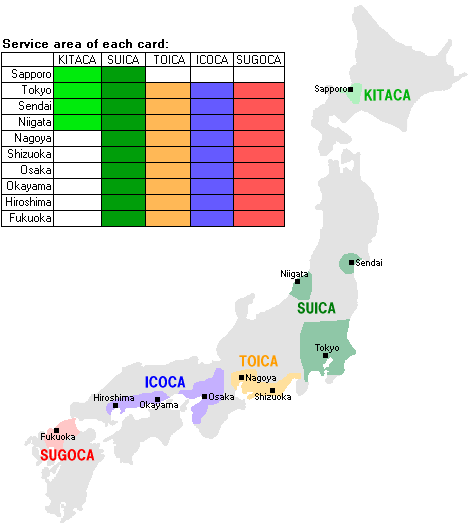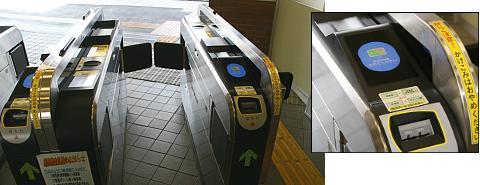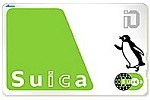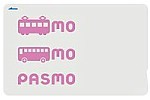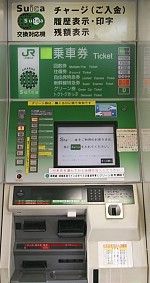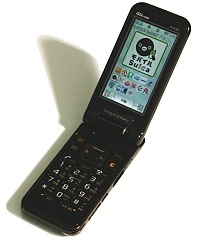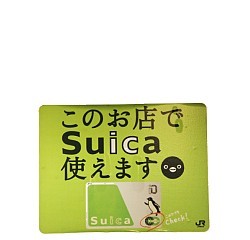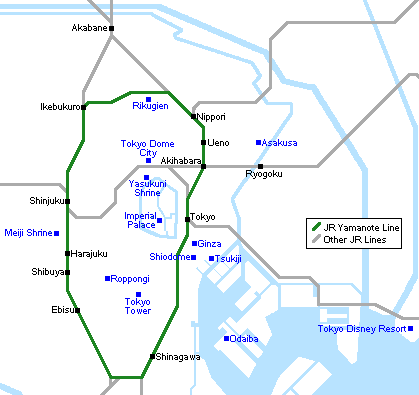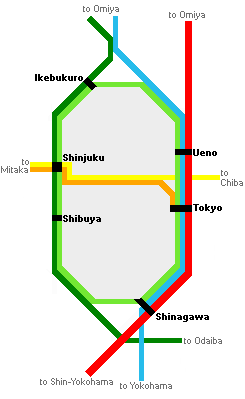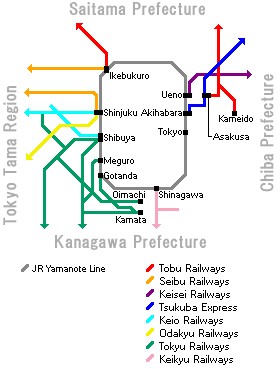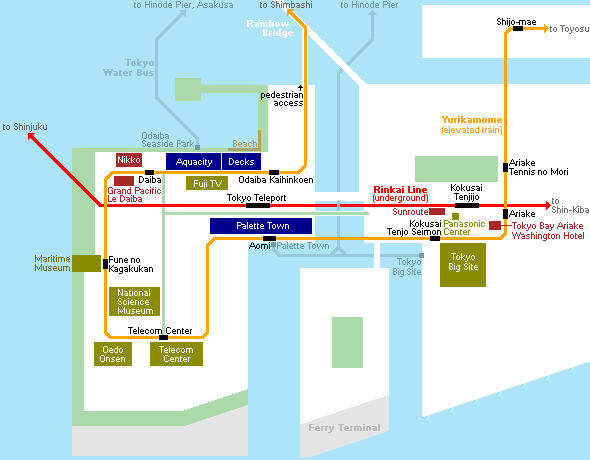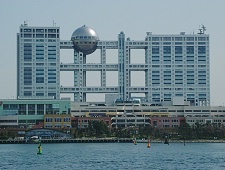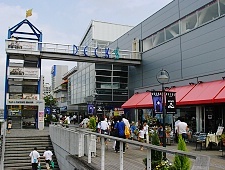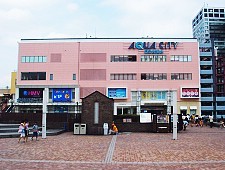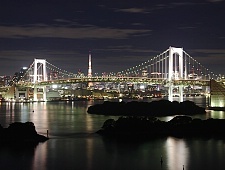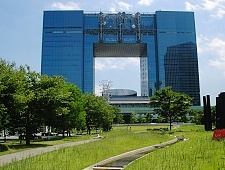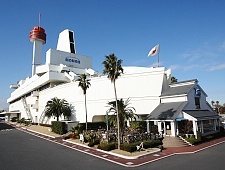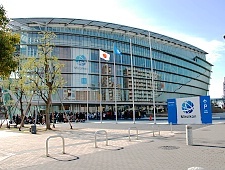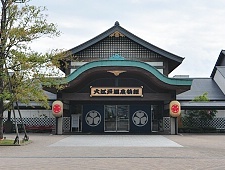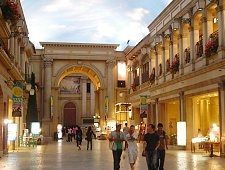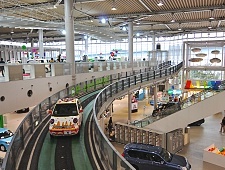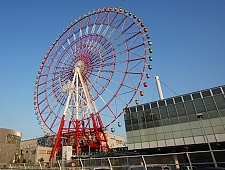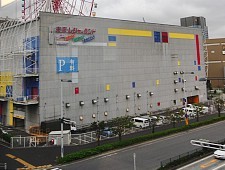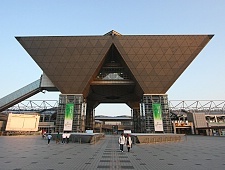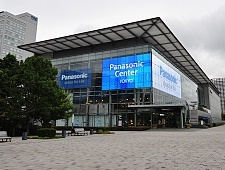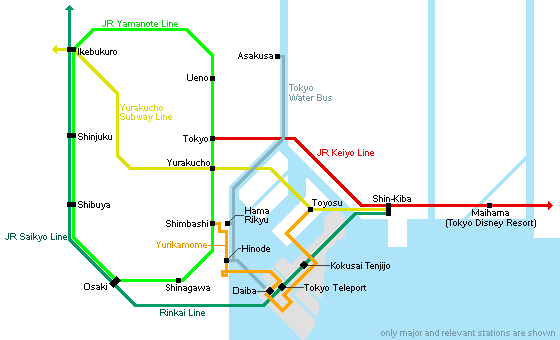Kami melaksanakan kebijakan khusus mengenai visa terkait dengan terjadinya gempa lepas pantai Pasifik, di wilayah Tohoku.
Berikut ini merupakan tata cara pengurusan permohonan visa untuk kepentingan jangka pendek (maksimum 90 hari) dengan tujuan kunjungan keluarga, kunjungan teman, kunjungan wisata, dan lain-lain. Syarat-syarat dokumen yang harus dilengkapi untuk memohon Visa berbeda sesuai dengan kewarganegaraan dari pemohon Visa.
Hal-hal umum yang perlu diperhatikan dalam permohonan Visa (Penting)
1. Pengundang dan penjamin, harus mempersiapkan dokumen "Dari Pihak Jepang" yang tercantum pada bagian akhir persyaratan permohonan Visa. Seluruh dokumen kecuali yang ditandai harus disertai dengan dokumen yang asli.
2. Apabila dokumen tersebut di atas telah lengkap, dikirim kepada pemohon Visa (pastikan agar tidak mengirimnya ke Konsulat Jenderal Jepang). Dokumen yang dikirim adalah dokumen asli yang tidak dikirim melalui email atau fax. Disarankan bagi pengundang untuk menyimpan salinan fotocopy dokumen yang telah dikirim.
3. Konsulat Jenderal Jepang di Denpasar hanya menerima permohonan Visa yang diajukan oleh pemohon yang berdomisili di propinsi Bali, NTB, dan NTT. Bagi pemohon yang berdomisili di luar propinsi tersebut, silahkan untuk mengajukan permohonan kepada Konsulat Jenderal Jepang yang memiliki wilayah kerja  pada daerah yang bersangkutan. Apabila dokumen telah lengkap, pemohon Visa dapat mengajukan permohonan ke Konsulat Jenderal Jepang. Masing-masing dokumen yang diserahkan adalah dokumen yang dikeluarkan dalam tiga bulan terakhir (dokumen yang memiliki masa berlaku, tidak boleh melewati masa berlaku tersebut). Seluruh dokumen yang diserahkan pada saat memohon Visa tidak dapat dikembalikan kepada pemohon Visa.
pada daerah yang bersangkutan. Apabila dokumen telah lengkap, pemohon Visa dapat mengajukan permohonan ke Konsulat Jenderal Jepang. Masing-masing dokumen yang diserahkan adalah dokumen yang dikeluarkan dalam tiga bulan terakhir (dokumen yang memiliki masa berlaku, tidak boleh melewati masa berlaku tersebut). Seluruh dokumen yang diserahkan pada saat memohon Visa tidak dapat dikembalikan kepada pemohon Visa.
4. Keputusan dapat atau tidak dapat dikeluarkannya Visa diketahui tiga hari setelah pengajuan permohonan Visa, hal tersebut disesuaikan dengan jenis dan kondisi permohonan Visa.
5. Masa berlaku Visa pada umumnya adalah tiga bulan dan tidak dapat diperpanjang.
6. Untuk mengetahui keputusan dapat atau tidak dapat dikeluarkannya Visa, pemohon Visa dapat menghubungi Konsulat Jenderal Jepang di Denpasar melalui telepon pada hari yang telah di tentukan.
7. Hal-hal yang perlu diperhatikan dalam hal mempersiapkan dokumen yang dilakukan oleh pihak Jepang :
(1) Shoheiriyusho (Surat Undangan Disertai Alasan Mengundang)
*Catatan : formulir "Surat Undangan Disertai Alasan Mengundang" (ukuran kertas A4)
(A) Surat ditujukan kepada Konsulat Jenderal Jepang
(B) Melengkapi tujuan masuk ke Jepang dengan rencana kegiatan yang akan dilakukan di Jepang (jelaskan dengan rinci, bukan dengan keterangan singkat seperti "wisata, kunjungan teman, atau kunjungan keluarga").
(C) Pada kolom pengundang, pastikan agar alamat, nama lengkap, dan nomor telepon, serta stempel tertulis dengan jelas (bagi orang asing yang tidak memiliki stempel dapat menuliskan tanda tangan).
*Bagi organisasi atau perusahaan, diwajibkan untuk melengkapi surat dengan tanda tangan dan stempel kantor resmi(Daihyosha-in, Yakushoku-in atau Sha-in).
(D) Nama pemohon ditulis dengan huruf romawi. Apabila jumlah pemohon Visa lebih dari satu orang, maka di belakang nama perwakilan pemohon Visa ditulis "[jumlah] orang pemohon lainnya, sesuai dengan yang tercantum pada daftar nama". Kemudian, mengenai kewarganegaraan, nama, pekerjaan, serta tanggal lahir seluruh peserta dilampirkan dalam daftar nama.
(E) Pastikan untuk melengkapi tanggal, bulan, dan tahun pada formulir saat itu juga (jangan sampai kosong, tidak dibenarkan apabila dilengkapi, diganti, ditambahkan, atau dikurangi di kemudian hari).
(2) Taizaiyoteihyo (Jadwal Perjalanan)
*Catatan : formulir "Jadwal Perjalanan" (ukuran kertas A4)
(A) Pastikan untuk mengisi tanggal kedatangan di Jepang dan keberangkatan pulang ke Indonesia. Selain itu, diharapkan untuk mengisi nama maskapai penerbangan dan bandara yang akan digunakan apabila jadwal penerbangan telah ditentukan.
(B) Mengisi keterangan lengkap mengenai tempat tinggal di Jepang (apabila hotel, harap menulis nama hotel, alamat, dan nomor telepon).
(C) Menulis rencana kegiatan sehari-hari saat tinggal di Jepang. Apabila suatu kegiatan dilakukan berkelanjutan dalam beberapa hari, maka dapat ditulis dengan (thn/bln/tgl~thn/bln/tgl).
(3) Mimotohoshosho (Surat Jaminan)
*Catatan : formulir "Surat Jaminan" (ukuran kertas A4)
(A) Pastikan untuk melengkapi semua hal yang tertulis pada surat jaminan (lengkapi dengan stempel), apabila tidak lengkap, maka tidak akan diterima.
(B) Hal-hal lain diterangkan dalam "Surat Undangan Diserta Alasan Mengundang".
(4) Kosekitohon (Family Register)
Merupakan dokumen asli yang dikeluarkan oleh kepala daerah setempat pada tiga bulan terakhir.
(5) Shotokushomeisho (Bukti Penghasilan)
Merupakan dokumen asli bukti penghasilan berupa sertifikat yang dikeluarkan oleh kepala daerah setempat yang menerangkan tentang pendapatan pada tahun sebelumnya (apabila tidak ada, menyerahkan bukti penghasilan 2 tahun sebelumnya).
(6) Nozaishomeisho (Bukti Pembayaran Pajak)
Mempersiapkan bukti pembayaran pajak berupa sertifikat (formulir 2) yang dikeluarkan oleh kepala kantor pajak daerah setempat yang menerangkan pendapatan yang diperoleh pada tahun sebelumnya (apabila tidak ada, menyerahkan bukti pembayaran pajak 2 tahun sebelumnya).
(7) Berikut ini adalah dokumen yang terkait dengan tujuan mengundang yaitu kepentingan bisnis jangka pendek:
(A) Pada prinsipnya, organisasi pengundang adalah orang yang sah menurut hukum, organisasi, atau organisasi pemerintah maupun daerah. Dalam hal suatu universitas di bawah nama seorang profesor mengundang dengan tujuan pertukaran, hal tersebut diijinkan.
(B) Bagi organisasi yang telah terdaftar sebagai kesatuan yang berbadan hukum, wajib menyerahkan Hojin-Tokibotohon (SIUP) yang dikeluarkan dalam tiga bulan terakhir (tidak berlaku bagi organisasi pemerintah atau daerah).
(C) Bagi organisasi yang belum terdaftar sebagai kesatuan yang berbadan hukum, dapat menyerahkan Kaisha/Dantai Gaiyosetsumeisho (Surat Keterangan Perusahaan/Organisasi). Formulir untuk membuat surat keterangan tersebut ditulis pada kertas A4 dengan judul "Surat Keterangan Organisasi atau Perusahaan".
(D) Apabila mengundang melalui profesor universitas atau perorangan, maka harus melampirkan Zaishokushomeisho (Surat Keterangan dari Tempat Kerja).
8. Biaya Visa dapat dilihat halaman Biaya Visa. 
FAQ mengenai Visa
Q1: Dokumen apa sajakah yang diperlukan untuk mengajukan permohonan Visa?
A1: Dokumen yang diperlukan, secara lengkap dapat dapat dilihat "
Persyaratan Permohonan Visa 
". Apabila terdapat hal yang kurang jelas, silahkan bertanya langsung ke Konsulat Jenderal Jepang.
Q2: Apakah diperlukan Visa untuk transit di Jepang saat hendak pergi ke Amerika?
A2: Pada dasarnya untuk dapat memasuki Jepang diperlukan Visa, tetapi apabila hanya transit di bandara dan tidak keluar dari bandara, tidak diperlukan Visa. Apabila tujuannya adalah tidak untuk mengunjungi Jepang, maka dalam hal ini diperlukan Visa transit.
Q3: Apakah dengan Visa transit dapat masuk ke Jepang dengan tujuan bisnis?
A3: Tidak bisa. Visa transit adalah Visa yang digunakan dengan tujuan pergi ke luar negeri melalui Jepang dengan cara tinggal sementara di Jepang. Informasi mengenai Visa bisnis dapat dilihat "
Persyaratan Permohonan Visa 
"
Q4: Apakah Visa diperlukan apabila suami/istri adalah orang Jepang?
A4: Ya.
Q5: Apakah Multiple Visa yang ada pada paspor yang lama masih berlaku apabila telah membuat paspor yang baru?
A5: Ya, berlaku. Dapat pula dipindahkan ke paspor yang baru dengan mengajukan permohonan kepada Konsulat Jenderal Jepang setempat untuk mengisi formulir pemindahan, menyerahkan foto serta kedua paspor (paspor lama & baru).
Q6: Mohon diinformasikan tentang masa berlaku Visa dan jangka waktu tinggal?
A6: Masa berlaku Visa tertulis pada [ Date of expiry ]di sebelah kanan atas Visa. Single Visa hanya dapat digunakan satu kali, sedangkan Multiple Visa dapat digunakan beberapa kali selama masih dalam masa berlaku.
Jangka waktu tinggal adalah jangka waktu yang tertera pada [ For stay (s) of ], tetapi pihak imigrasi Jepanglah yang memutuskan jangka waktu tinggal dan memberikan landing permision.
Jangka waktu tinggal yang sebenarnya menjadi jangka waktu yang tertera pada landing permision. Misalnya, masa berlaku 1 April 2010, bagi yang mempunyai Visa dengan masa tinggal 90 hari, harus masuk ke Jepang paling lambat tanggal 1 April 2010. Dapat tinggal 90 hari terhitung sejak hari saat masuk ke Jepang.
Q8: Dengan tujuan wisata, apabila saat mengajukan permohonan Visa, tempat tinggal belum pasti, apakah pada formulir Permohonan Visa dan Jadwal Perjalanan dapat dikosongkan?
A8: Tidak, formulir Permohonan Visa dan Jadwal Perjalanan harus diisi dengan lengkap.
Q9: Berapa jumlah minimal saldo di bank yang diperlukan?
A9: Jumlah yang diperlukan harus mencukupi kebutuhan selama tinggal di Jepang.
Q10: Kewarganegaraan apa sajakah yang memerlukan Visa untuk masuk ke Jepang?
A10: Kewarganegaraan Indonesia. Untuk kewarganegaraan yang lain dapat dilihat
Homepage Kemenlu Jepang. 
Q11: Apabila Certificate of Eligibility hilang, apakah bisa menggunakan salinan fotocopynya?
A11: Tidak, silahkan menghubungi penjaminnya di Jepang agar dikirimkan kembali yang aslinya.
Q12: Dalam hal tidak dapat masuk ke Jepang pada saat Ijin Masuk Kembali (Re-Entry Permit) masih berlaku. Apakah Re-Entry Permit bisa diperpanjang?
A12: Bisa, jika terdapat alasan yang dapat diterima.
Perpanjangan Re-Entry Permit dapat dilakukan apabila masih berada dalam batas waktu Re- Entry Permit dan masa tinggal. Perpanjangan tersebut hanya dapat dilakukan satu kali saja dan akan memperoleh perpanjangan maksimal selama satu tahun. Pengajuan permohonan perpanjangan tersebut, dapat dilakukan di Konsulat Jenderal Jepang setempat dengan cara mengisi formulir permohonan perpanjangan batas waktu Re-Entry Permit, dan membawa tanda pengenal atau paspor. Kemudian, Re-Entry Permit yang telah diperpanjang, hanya berlaku untuk satu kali, silahkan untuk mengajukan permohonan Re-Entry Permit yang baru setelah masuk ke Jepang.
Q13: Bagi yang berkewarganegaraan China, Rusia, dan NIS, apakah dapat mengajukan permohonan Visa dengan syarat-syarat dokumen seperti yang tercantum?
A13: Tidak cukup hanya dokumen-dokumen tersebut saja, tetapi diperlukan penjamin orang Jepang. Terlepas daripada ada atau tidaknya yang menanggung biaya bagi pemohon Visa, pada saat mengajukan permohonan hendaknya menyertakan dokumen mengenai biaya untuk pergi ke luar negeri yang ditanggung oleh pihak penjamin yang terdapat pada daftar dokumen pengajuan permohonan Visa. Proses untuk memutuskan mengenai dapat dikeluarkan atau tidaknya Visa, memerlukan waktu yang lebih lama dari yang biasanya.
Q14: Mohon diberikan penjelasan tentang alasan penolakan Visa.
A14: Alasan penolakan adalah karena permohonan tidak memenuhi
kriteria pengeluaran Visa. 
Alasan yang lebih mengkhusus tidak dapat kami jelaskan, hal ini kami lakukan agar tidak terjadi penyalahgunaan informasi seperti masuk atau memasukkan seseorang ke Jepang dengan tujuan ilegal, dan lain-lain. Selain itu, informasi tersebut juga dikhawatirkan dapat mengganggu proses penyeleksian Visa di kemudian hari, dimana hal tersebut memiliki dampak negatif bagi keamanan dan kenyamanan masyarakat Jepang. Kemudian, dalam The Administrative Procedure Act, pasal 3 ayat 1 nomor 10 yang mengatur "hal-hal terkait penanganan imigrasi bagi warga asing" terdapat pengecualian kewajiban untuk menunjukkan kriteria seleksi atau alasan penolakan dan lain-lain.
Q15: Apabila saya kehilangan passport yang di dalamnya tercantum Izin Masuk Kembali (Re-Entry Permit) saat pulang ke Indonesia, apakah Izin Masuk Kembali tersebut dapat dikeluarkan oleh Konsulat-Jenderal Jepang?
A15: Tidak bisa. Apabila hal tersebut terjadi, Anda harus membuat passport baru, kemudian melalui penjamin Anda di Jepang, silahkan memohon Surat Keterangan Registrasi Warga Asing (Toroku Gempyo Kisaijiko Shomeisho) di Kantor Pemerintahan Daerah tempat melakukan pendaftaran orang asing di Jepang sebelumnya dan melapor kepada pihak Imigrasi Jepang untuk memperoleh Izin Masuk Kembali (Stiker Izin Masuk Kembali yang sama dengan yang tercantum pada passport yang hilang) yang akan ditempelkan di balik Surat Keterangan Registrasi Warga Asing. Untuk memperoleh surat keterangan tersebut ada kalanya diperlukan Surat Keterangan Kehilangan dari Kepolisian di Indonesia. Keterangan selengkapnya, silahkan bertanya pada Kantor Imigrasi tempat mengajukan permohonan di Jepang.
Surat Keterangan Registrasi Warga Asing yang telah ditempelkan Stiker Izin Masuk Kembali, dikirimkan kepada Anda untuk digunakan saat pemeriksaan imigrasi saat memasuki wilayah Jepang.
Apabila Anda telah memohon visa yang baru, maka status izin tinggal yang telah dikeluarkan sebelumnya tidak berlaku lagi.
Visa Kunjungan Medis
Visa Kunjungan Medis adalah Visa yang dikeluarkan untuk pasien warga negara asing yang akan pergi ke Jepang dengan tujuan medis (termasuk pemeriksaan kesehatan lengkap). Visa ini juga dikeluarkan bagi orang yang mendampingi pasien.
Informasi lebih jelas mengenai Visa Kunjungan Medis, dapat dilihat di
Homepage Kemenlu Jepang
